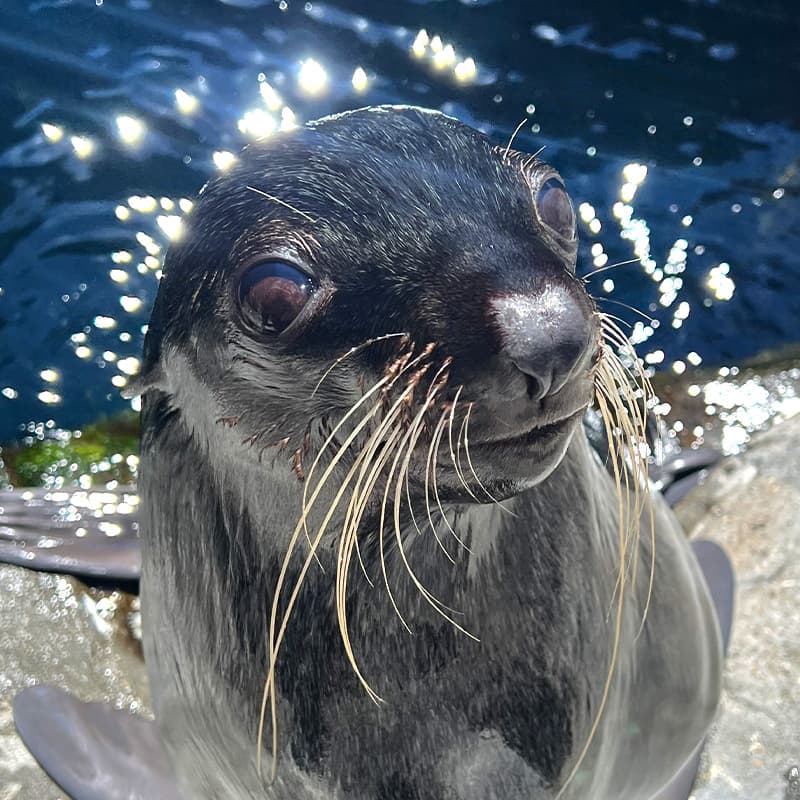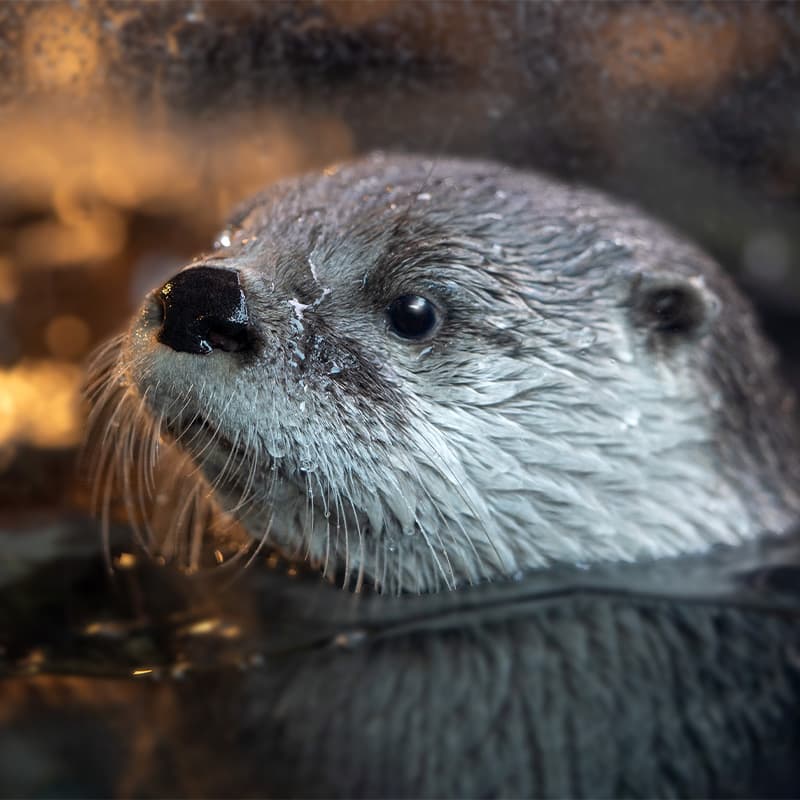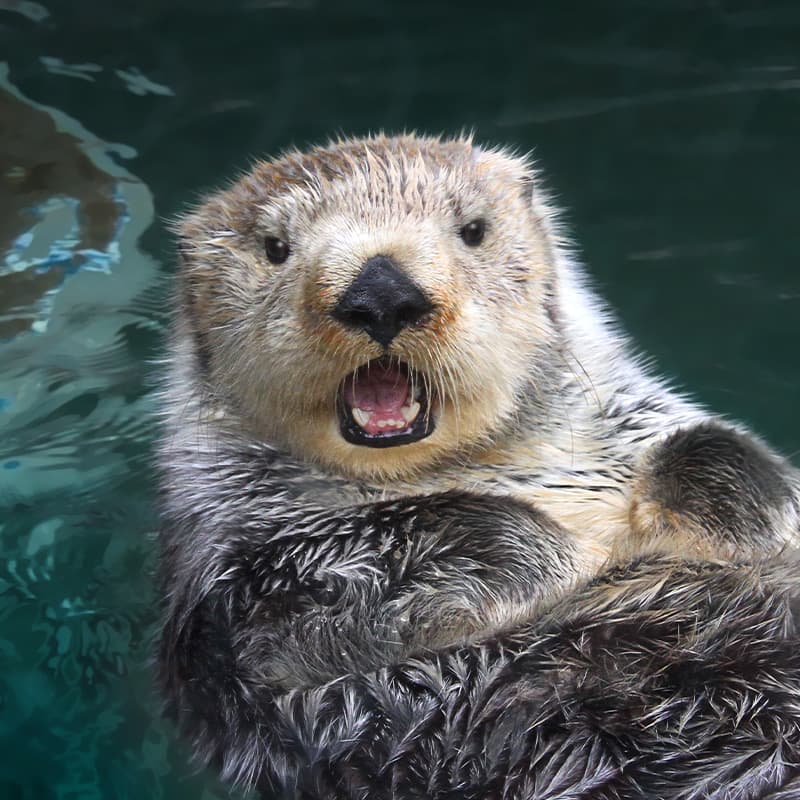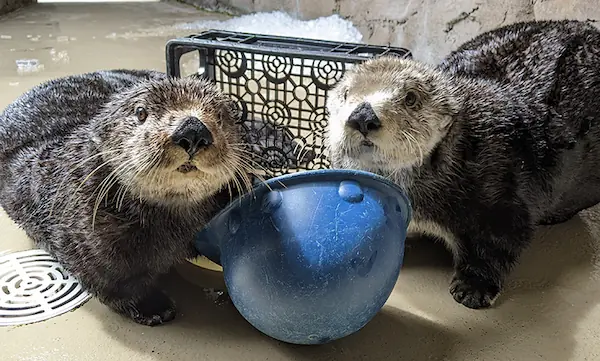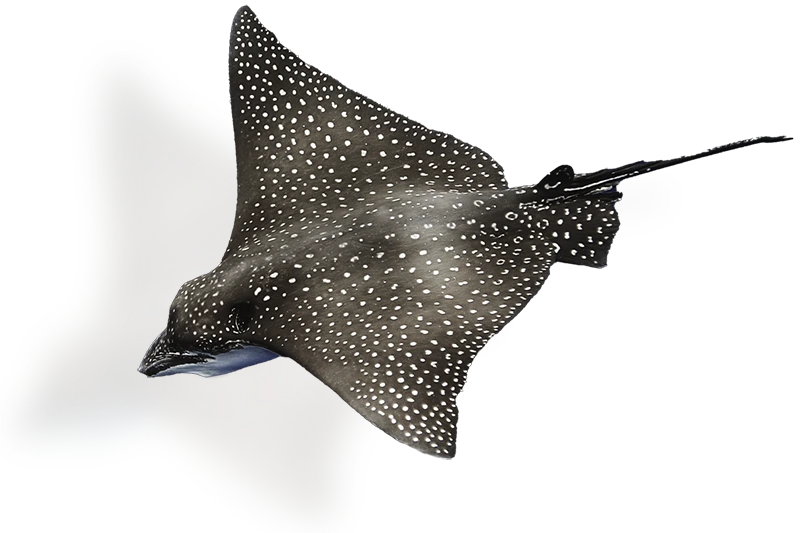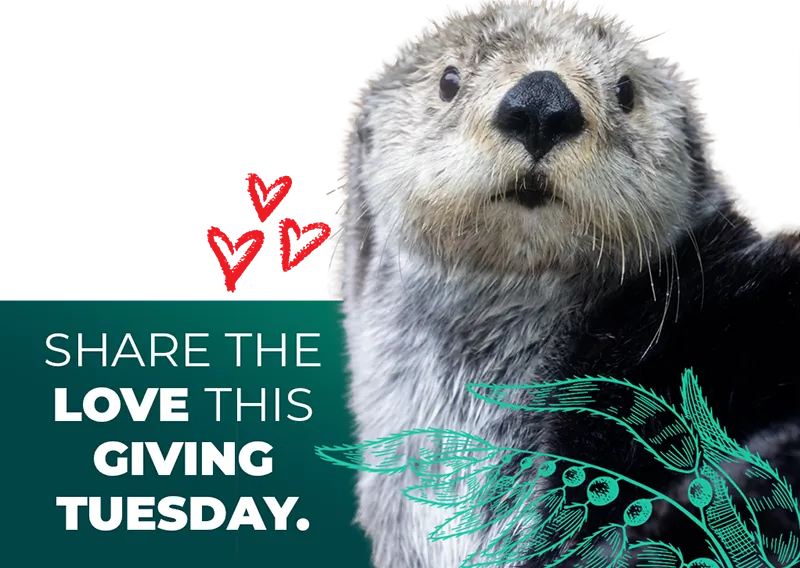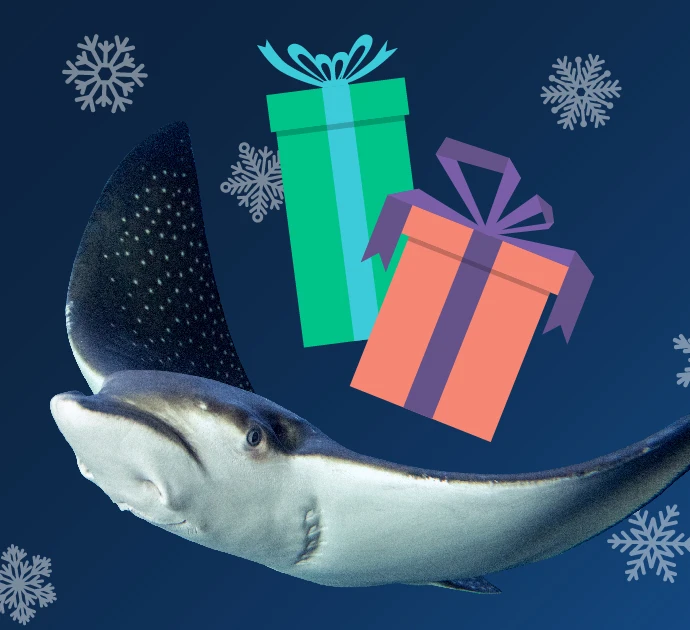- Mammals
Harbor seal
Say hello to our harbor seals!
Come see Hogan and Casey in their beautiful habitat, featuring a spacious pool and plenty of dry resting area (or haul-out space) for them to enjoy. With acrylic viewing panels on three sides and seating for up to 100 visitors (or three entire classrooms of students!) you’re sure to get a prime view of these popular, playful marine mammals.
At the Aquarium
- Harbor seal habitat, Pier 60
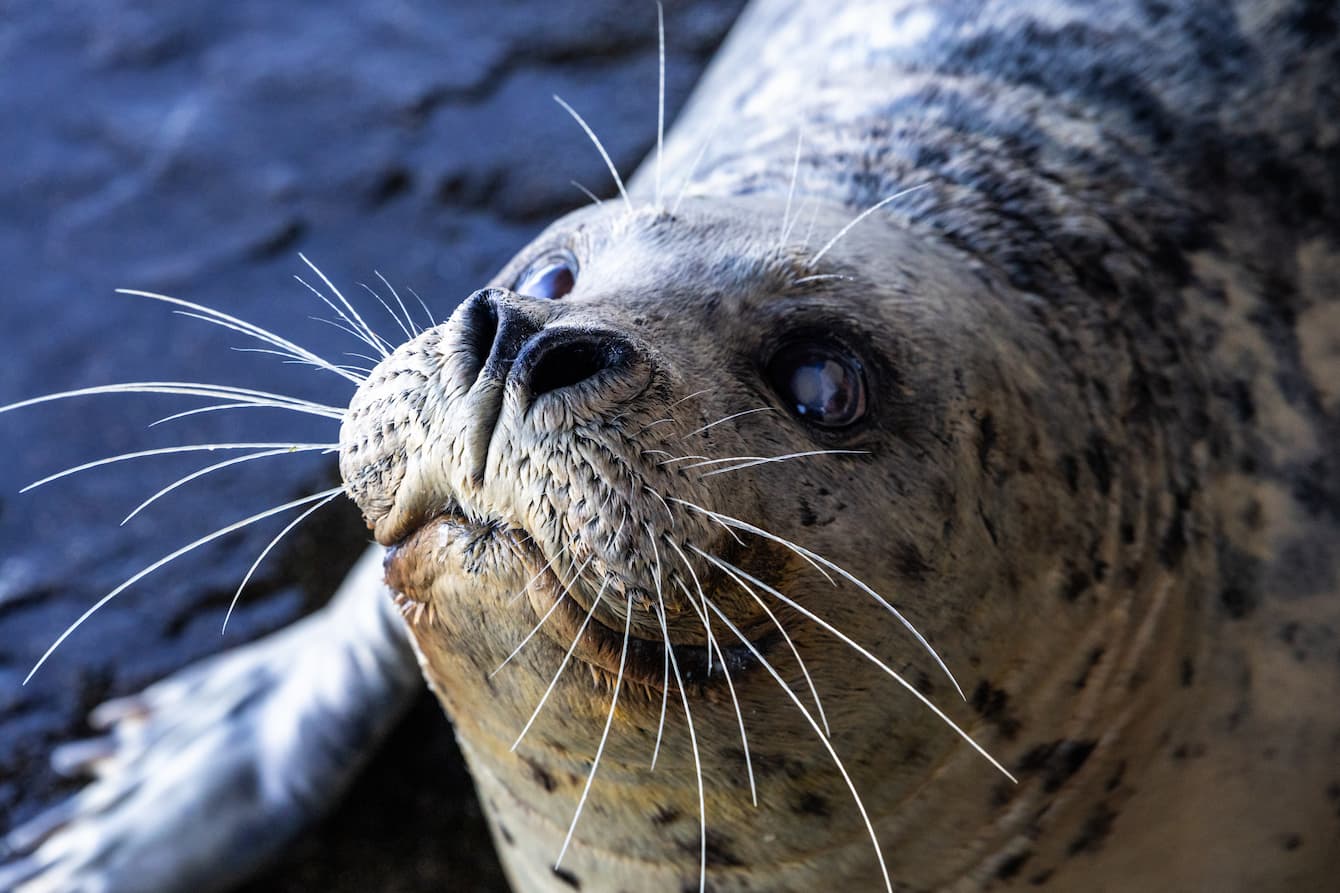
Remembering Barney
1985–2025

The Seattle Aquarium remembers Barney the harbor seal, a beloved member of the Aquarium family for nearly 40 years who passed in March 2025.
He was one of the oldest known harbor seals in human care and touched the hearts of millions of Aquarium staff, volunteers and visitors during his long life. Born at the Aquarium in 1985, he enjoyed the simple things in life, like napping in the sunshine and eating his favorite fishy snacks.
A charismatic ambassador for his species, Barney inspired a lot of love for his fellow harbor seals. We miss him dearly.
Read more
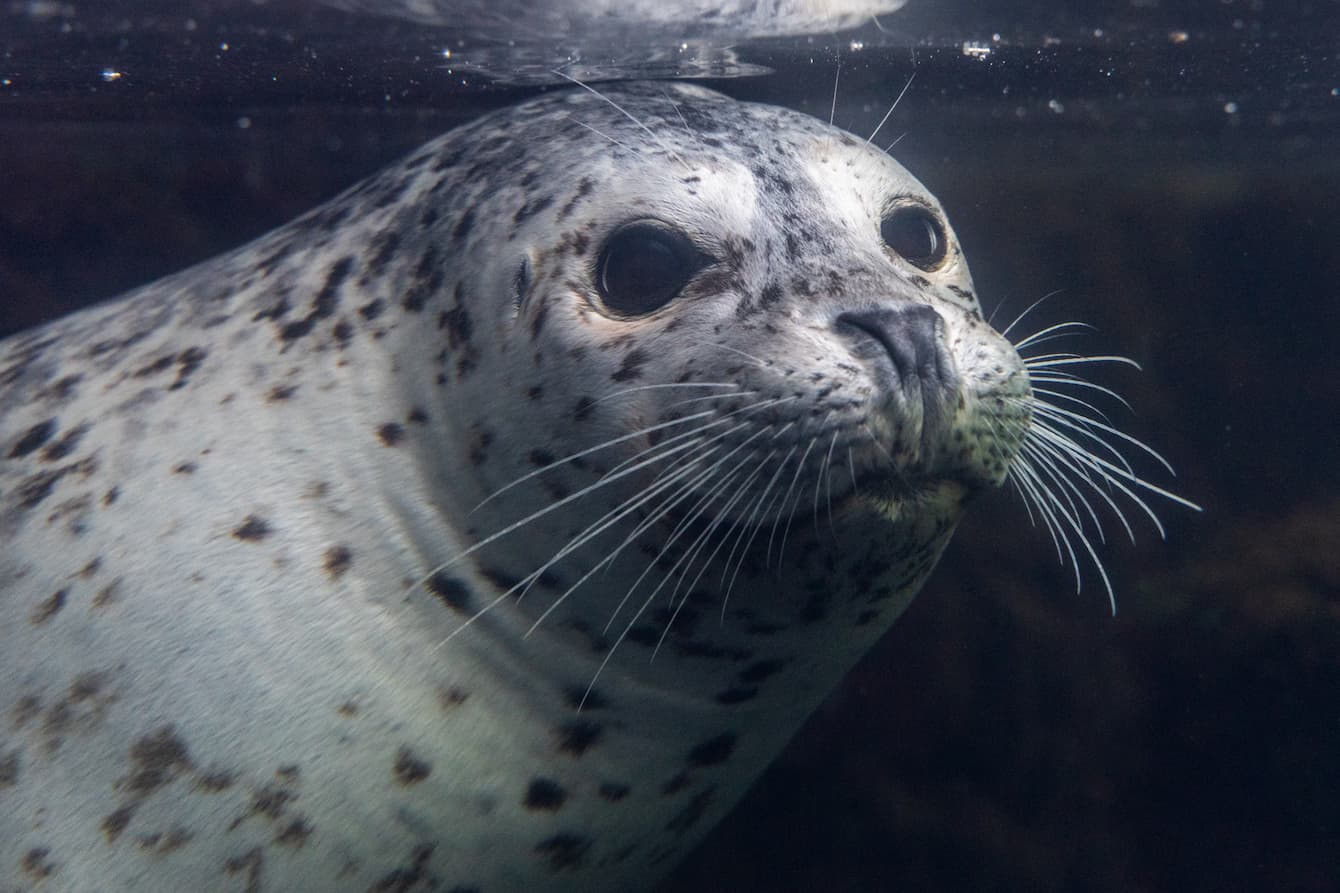
Vital Statistics
Male harbor seals can weigh between 150 and 375 pounds and measure 5–6 feet in length; females range from 100 to 300 pounds and measure 4–5 feet in length. Unlike sea otters and river otters, harbor seals don’t rely on fur to stay warm. Instead, their thick layer of blubber provides insulation while storing energy, adding buoyancy in the water and contributing to their streamlined shape. Commonly called “crawling seals,” they use their hind flippers for propulsion underwater only; these flippers can’t be rotated forward and thus can’t be used for locomotion on land. Their front flippers are more versatile—they’re used for steering in the water and, along with body undulations, for forward movement on solid ground.
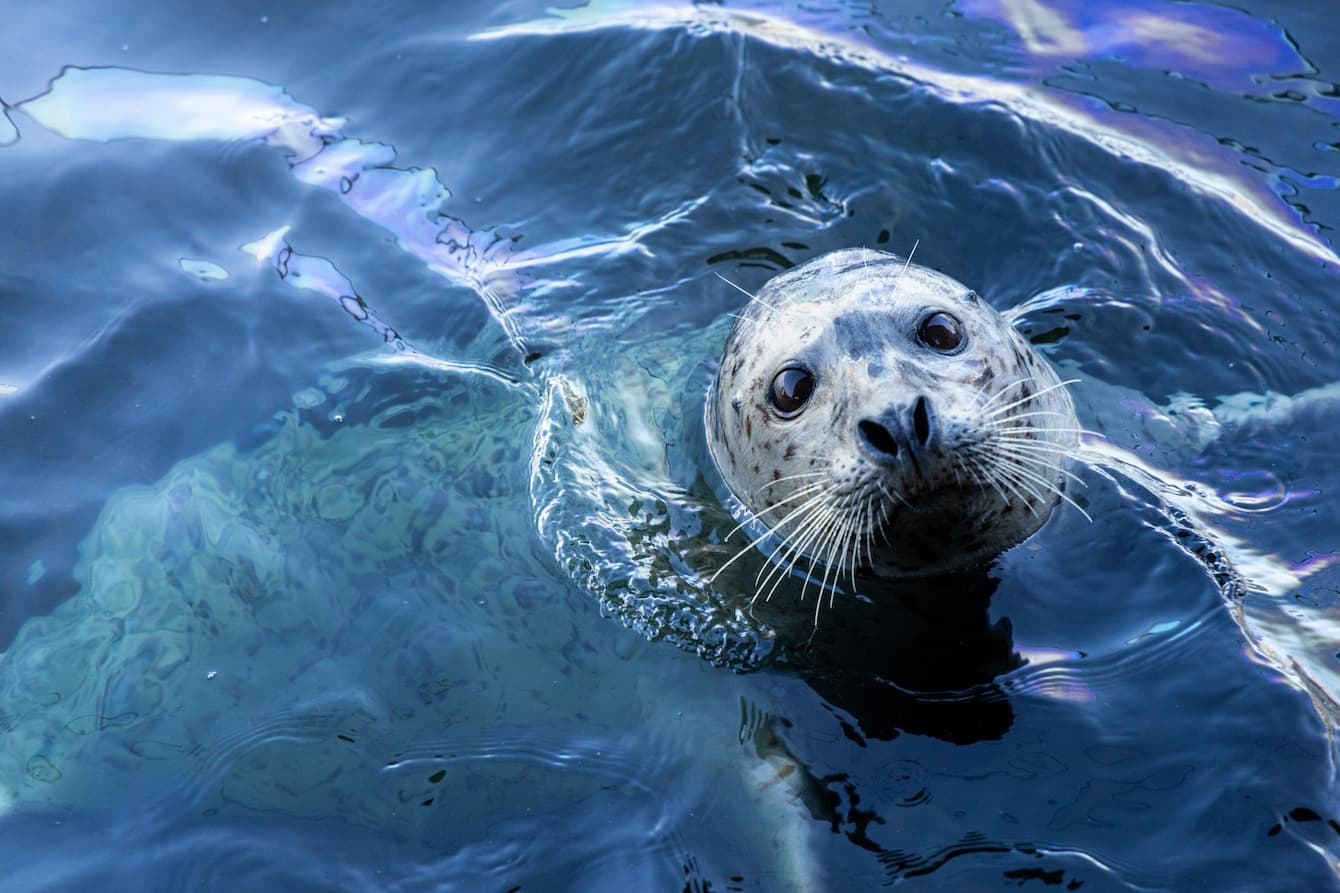
Out and About
In the wild, harbor seals are found in coastal and inland marine waters and estuaries. Because they “haul out” (or come onto land) frequently, they stick to areas where sandbars, beaches or rocks are uncovered at low tide. Harbor seals do not migrate. Instead, they tend to stay in one locale most of their lives and only travel when they’re in search of food or a mate during breeding season. Adult harbor seals are solitary and rarely interact with one another, with one exception: breeding. They are communal during breeding times, with males and females mingling freely.
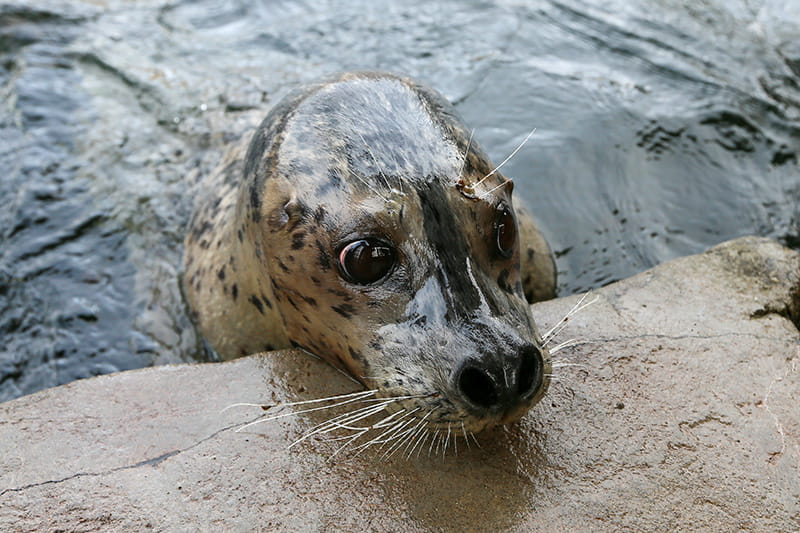
More Than Meets The Eye
Harbor seals are a familiar sight in the Puget Sound region. Their heads pop out of the water while we walk along the shore, cross the Sound by ferry, sit in a waterfront restaurant, or gaze out over Elliott Bay when visiting the Aquarium's harbor seal habitat! Charming and playful, harbor seals captivate us with their gentle eyes, droopy whiskers and round bodies. Beyond their beguiling appearance, they are also barometers of the health of Puget Sound and sentinels of the well-being of the habitats in which they live. The reason for this is found in their diet: harbor seals eat sole, flounder, sculpin, cod, herring, octopus and squid—all links in a food chain that is increasingly vulnerable to pollution, development and other human activities.
Quick facts
Harbor seals rely on their thick layer of blubber to stay warm.
Their diet consists of sole, flounder, sculpin, cod, herring, octopus and squid.
Harbor seals can sleep underwater and will come up to breathe every 5 to 10 minutes without waking up!
